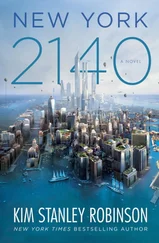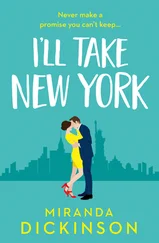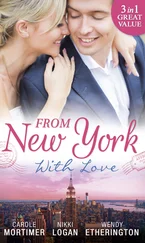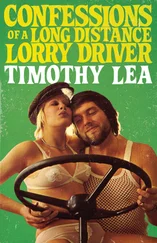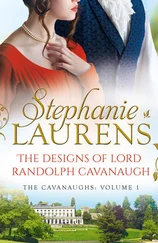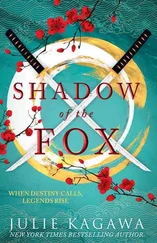The grand total, as of this writing, is 114. Some of these celebrities I’ve had more than once (Dick Clark – three times!), so if I counted each time that happened the total would be 122. And if I were able to count the ones I didn’t recognize, I’m sure the number would be God knows how many. But however you look at it, it’s a lot of celebs. So many, in fact, that it lends itself to categorization. Here are some of the stand outs:
Movie Stars – 17 – Lauren Bacall, Sean Penn, Dennis Hopper, Jane Seymour, Richard Dreyfuss, Robin Williams, Matt Dillon, Dan Aykroyd, Eli Wallach, Kevin Kline, Bill Pullman, Diane Keaton, Carroll O’Connor, Kevin Bacon, Tom Hulce, Douglas Fairbanks, Jr and, of course, Leo.
Pop Music Stars – 9 – Ray Davies (The Kinks), Johnny Rzeznik (Goo Goo Dolls), Paul Simon, Art Garfunkel, Carly Simon, Diahann Carroll, Gregg Allman, Derek Trucks, James Taylor.
Crooners – 3 – Tony Bennett, Frank Sinatra, Jr, Eddie Fisher.
Folk Singers – 3 – Peter Yarrow (Peter, Paul and Mary), Suzanne Vega, Richie Havens.
Famous Writers – 5 – Norman Mailer, Jimmy Breslin, Harrison Salisbury, Rex Reed, Liz Smith.
Offspring of Celebrities Who Are Celebrities Themselves – 4 – Caroline Kennedy, Lucie Arnez, Douglas Fairbanks, Jr, Steven Mailer (son of Norman).
Talk Show Hosts – 3 – Dick Cavett, David Susskind, Tom Snyder.
Band Leaders of Late-Night Talk Shows – 2 – Paul Schaeffer (Letterman), Max Weinberg (Conan O’Brian).
Big-Time Businessmen Who Named Their Companies After Themselves – 2 – Leon Hess (Hess Oil and owner of the NY Jets football team), Frank (‘it takes a tough man to make a tender chicken’) Purdue. Writers of Famous Christmas Songs – 2 – Mel Tormé (‘The Christmas Song’, aka ‘Chestnuts Roasting on an Open Fire’), J. Fred Coots (‘Santa Claus is Coming to Town’).
Porn Stars – 3 – Hyapatia Lee, Sharon Mitchell, Cara Lott.
Mick Jagger Exes – 2 – Marianne Faithfull, Bianca Jagger.
Fugitive Hippies – 1 – Abbie Hoffman.
That’s right. I had a famous fugitive hippie in my cab, and there aren’t too many of those around. Or perhaps I should say a ‘former’ fugitive hippie…
I was cruising up 8 thAvenue one night in February, 1982, when I was hailed by two men on the street. One was a normal-looking, forty-something fellow and the other turned out to be a dark-haired, raving motormouth who spoke to his traveling companion in a semi-hysterical rant without giving him a chance to get a word in edgewise. We continued up 8 thAvenue to Central Park West until we reached 65 thStreet, where the man with the obsessive outflow got out of the cab, leaving the other passenger with me. I turned right onto transverse and we proceeded across the park to the East Side.
‘That was Abbie Hoffman,’ the man said. ‘I’m his parole officer.’
Abbie Hoffman, if you’re too young to remember him, was an iconic counter-culture figure from the ’60s. He founded the Youth International Party (the “Yippies”) and received vast amounts of publicity by engineering stunts and demonstrations which mocked some of the dubious values of American society. He had been convicted of dealing cocaine in 1973 and became a fugitive until 1980, when he re-emerged and served a brief prison term.
It was a surprise and something of a revelation to be able to be a ‘fly on the wall’ during this ride. A surprise because Abbie Hoffman had seemed to me to be something of a folk legend, more like a Johnny Appleseed or a Paul Bunyon than a real person. Yet there he was.
And a revelation to observe the condition he was actually in. I was saddened but not altogether surprised several years later to learn that he had committed suicide.
However, it is another iconic personage from the ’60s (and beyond) who is the answer to this frequently asked question: ‘Of all the celebrities you’ve had in your cab, which one is your favorite?’
On two occasions I have been honored to transport the derriere of the great Paul Simon in my taxicab. The composer of ‘Bridge Over Troubled Water’, ‘Mrs, Robinson’, ‘The Boxer’ and so many other wonderful songs, Paul Simon is someone who I can truly say has enriched my life through his music. It can be a little overwhelming, however, to meet someone in person whom you have admired for so long. What do you say to a living legend? What, when you find yourself suddenly face to face with such a larger-than-life character, do you talk about?
Why, baseball, of course.
I was heading uptown on Central Park West on a lovely day in June, 1983, looking for my next passenger, when I spotted him standing there with a doorman on the opposite side of the street. They both had an ‘I want a cab’ expression on their faces which I took as my cue to make one of those sweeping U-turns that taxis in New York City are famous for. Taking care not to run over my favorite songwriter and thus bring to an end the long series of Simon and Garfunkel reunions, I pulled my cab around to where they were standing, and Paul got in.
He wanted to go to the East Side, so we headed through Central Park in that direction. I noticed Paul was wearing an unusual baseball cap with an insignia on it that I didn’t recognize so, seeking an entrance point from which to start a conversation, I asked him what his hat was all about. He told me it was a hat from a Japanese baseball team, that he’d ‘played a stadium over there’, and that the hat was a souvenir. I asked him jokingly which position he had played and, matching the spirit of my question, Paul replied that he’d played ‘guitar’.
I noticed that we had found some common ground upon which to communicate and that there was some rapport between us, so I decided to steer the discussion to an area of fertile soil when baseball is the subject of conversation in New York – the Yankees. I had heard or read somewhere that Paul was a Yankee fan, which might be expected of the person who wrote the line, ‘Where have you gone, Joe DiMaggio?’, and I was not wrong.
As our chat about the Yankees got going, I could see that Paul was emotionally involved with the franchise and its meaning to New York. He spoke knowledgeably about the players and the problems the organization was having. And he had nothing positive to say about George Steinbrenner, the owner of the team, or Billy Martin, who was in one of his many incarnations as the Yankee manager at the time, even going so far as saying that the two of them were not only bad for baseball, but bad for New York City as well.
I was quite impressed by the passion with which he spoke. It was obvious that baseball in general and the Yankees in particular were things that were important to him. So involved had Paul become in our discussion of the subject, in fact, that he stayed on in my cab for a minute after we reached his destination in order to wrap up the conversation – a great honor, from my point of view. Once he finally did leave I was left with the impression that in Paul’s world the travails of Julio down by the schoolyard and Cecilia up in his bedroom were of no more importance than the slings and arrows of Willie Randolph at second and Dave Winfield in right.
The memory of our conversation stayed with me for some time. I found myself wondering, whenever George or Billy would make the news with some new blunder, what Paul would have said about it. He had become for me the conscience of the Yankees. And then one day, out of nowhere, an idea hit me with the impact of a Goose Gossage fastball: Paul Simon would make the perfect owner of the New York Yankees. A native New Yorker, a lifelong Yankee fan, an important contributor to the legacy of the team through his music, a caring, intelligent and disciplined person, and the possessor of some serious wealth – somehow it all just fit. Yes! Paul Simon, the one man who could rescue our Yankees from the tyranny of the wicked King George. I decided that if fate ever put Paul back in my cab, I would do my best to sell him on the idea.
Читать дальше

